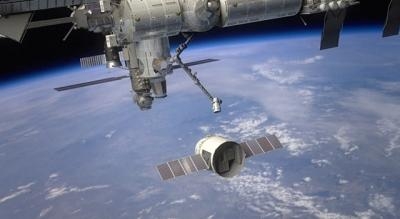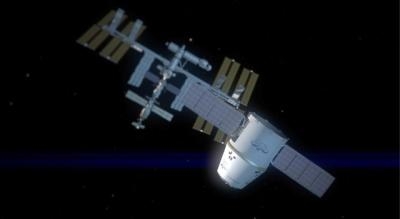Mon, May 21, 2012
Launch from Cape Canaveral Would Set The Stage For Historic Test Flight
SpaceX and NASA have set 0344 EDT on Tuesday, May 22nd for the next attempt to launch a Falcon 9 rocket carrying a Dragon spacecraft to orbit that would make SpaceX the first commercial company in history to try to send a spacecraft to the International Space Station. To date, sending a spacecraft to the space station has only ever been accomplished by four entities – the United States, Russia, Japan and the European Union.

Saturday’s launch was aborted when the flight computer detected slightly high pressure in the engine 5 combustion chamber. During rigorous inspections of the engine, SpaceX engineers discovered a faulty check valve on the Merlin engine. The failed valve was replaced on Saturday and after thorough analysis the vehicle has been cleared for launch.
During the mission, Dragon must perform a series of complex tasks, each presenting significant technical challenges (dates subject to change):
- May 22/Launch Day: SpaceX’s Falcon 9 rocket launches a Dragon spacecraft into orbit from the Cape Canaveral Air Force Station.
- May 23: Dragon orbits Earth as it travels toward the International Space Station.
- May 24: Dragon’s sensors and flight systems are subject to a series of complicated tests to determine if the vehicle is ready to berth with the space station; these tests include maneuvers and systems checks that see the vehicle come within 1.5 miles of the station.
- May 25: NASA decides if Dragon is allowed to attempt to berth with the station. If so, Dragon approaches; it is captured by station’s robotic arm and attached to the station. This requires extreme precision as both Dragon and station orbit the earth every 90 minutes.
- May 26 - 31: Astronauts open Dragon’s hatch, unload supplies and fill Dragon with return cargo.
- May 31: Dragon is detached from the station and returns to Earth, landing in the Pacific, hundreds of miles west of Southern California.

This is SpaceX's second demonstration flight under a 2006 Commercial Orbital Transportation Services (COTS) agreement with NASA to develop the capability to carry cargo to and from the International Space Station. The purpose of the flight is to provide NASA and SpaceX with flight data needed to ensure successful future missions to the space station. Demonstration launches are conducted to determine potential issues so that they might be addressed and – by their very nature – carry a significant risk. If any aspect of the mission is not successful, SpaceX will learn from the experience and try again. (Images provided by SpaceX)
More News
Also: Vertical Flight Society, NBAA Maintenance Conference, GA Honored, AMT Scholarship For the first time, students from Embry-Riddle’s Daytona Beach, Florida, campus took t>[...]
Hazardous Weather Information Summary of significant meteorological information (SIGMET/WS), convective significant meteorological information (convective SIGMET/WST), urgent pilot>[...]
"The need for innovation at speed and scale is greater than ever. The X-62A VISTA is a crucial platform in our efforts to develop, test and integrate AI, as well as to establish AI>[...]
(FAA) Inspector Observed That Both Fuel Tanks Were Intact And That Only A Minimal Amount Of Fuel Remained In Each Analysis: According to the pilot, approximately 8 miles from the d>[...]
“Pyka’s Pelican Cargo is unlike any other UAS solution on the market for contested logistics. We assessed a number of leading capabilities and concluded that the Pelica>[...]
 Airborne-Flight Training 05.09.24: ERAU at AIAA, LIFT Diamond Buy, Epic A&P
Airborne-Flight Training 05.09.24: ERAU at AIAA, LIFT Diamond Buy, Epic A&P ANN's Daily Aero-Term (05.07.24): Hazardous Weather Information
ANN's Daily Aero-Term (05.07.24): Hazardous Weather Information Aero-News: Quote of the Day (05.07.24)
Aero-News: Quote of the Day (05.07.24) NTSB Final Report: Cessna 150
NTSB Final Report: Cessna 150 Aero-News: Quote of the Day (05.08.24)
Aero-News: Quote of the Day (05.08.24)




